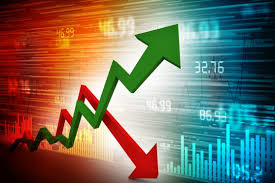It’s every investor’s favorite dream – buying into stocks and then relaxing as the stocks do what needs to be done without your losing precious sleep. Such stocks are fondly referred to as forever stocks, rightly conveying that you marry them, and the mutual love affair lasts your lifetime.
What makes these stocks tick is that their growth will be consistent throughout the year, year after year, and they will boost earnings without posing risks normally associated with lesser stocks. Far from being a daydream, such stocks do exist and they make you a decent pile of money.
Investors would do well to recollect the famous Oppenheimer survey that discovered that the S&P 500 had an unbroken run of success for two decades. This is not to imply that such stocks do not ever see declines, they do and when that happens you might just be tempted to let go of them to cover losses, but retaining these stocks would be the greater challenge presuming that your interests are spread out over the long term.

The beauty of forever stocks is that they are tough and resilient and do a pretty good job of holding up even when the market is experiencing peak volatility.
Research the market (and the companies obviously) and carefully select the ten safest stocks that you would expect to record consistent growth through a decade or more of your life, and compare their past performance with the S&P 500. If your choice is correct you may notice that the listed stocks may have dropped appreciably lower than the S&P 500. That’s the sheer power of forever stocks.
The point is that the growth recorded by theses select stocks more than makes up for the losses that the market would otherwise force you to meekly accept. Just to cite one example, MasterCard experienced a spike in earnings in August this year that had share prices shooting by 13 percent, and that must have been cool comfort for happy investors when the Dow Jones Industrial Average crashed 500 points the following day.
If you thought that these spikes are dramatic you may have missed the growth spread over a longer period which is even more impressive registering 25-30 percent compared to nearly 10 percent of the S&P.
The forever stocks may sometimes flatter to deceive and seemingly reputed and hitherto financially sound companies have been known to bite the dust – Enron, WorldCom, General Motors – to name a few. In these instances forever got replaced by free-fall.
If you are wading in unfamiliar territory in identifying forever stocks, here’s the low down on zeroing in on them:
Such companies will be having a rock solid advantage over the competition in their sector or may even be a monopoly.
These companies will reward their investors with extremely generous dividends.
You will find these companies buying massive shares of their own, kind of like reinvesting in themselves.
Once you have such a company in your sight, you can rest assured that you will be well on course to making some serious money in the long term; your immediate priority would be to buy into these shares and to put them away for a couple of decades. Financially, your decision would be oozing with common sense because being strong companies you can expect them to take adequate care of your interests, and of course success breeds success over a longer time span.
To cite a valid example, there’s Philip Morris, the tobacco major with serious investments in at least fifteen global brands spread out over 180 nations. It might be awe-inspiring globally, but you won’t find a more shareholder centric company that has presided over dividend distribution exceeding 39 percent at the conclusion of 2014, and the company also repurchased shares exceeding 16 percent of its mammoth shareholding, thereby contributing to a quantum jump in 20 percent in its earnings per share.
As the wise investor may surmise, buying into this company assures a lock in of at least 4 percent, with further increases expected in the pipeline. As the company repurchases its shares more aggressively in the coming decade you can expect a healthy return on your investment. The product is also one which is high in demand which can be expected to increase its market penetration substantially in coming years. So the investor can visualize the kind of robustness and stability that ensures a good night’s sleep. This is not to imply that all forever stocks behave similarly, but the downturns will be rare and sporadic, not the norm.
The last word
If you invest in financially robust and strong companies you may have found the key to maintaining the stability of your amply diversified investment portfolio. These are companies that withstand global fluctuations easily and preserve their financial strengthen, and will even improve on their financial foundations as the years and decades roll by. In a vastly volatile stock market it would be a wise decision to track down and invest in companies that will not panic at the first sign of trouble. Our job is to create awareness in investors on what constitutes safe investment and identifying the investment that assures steady growth whatever the market risk, and forever stocks inspiringly lead the pack.





















